Looking for new construction suggestions
I'm hoping to start building my house soon and I'm looking for some suggestions. I'm mainly looking for ways that I can build a stronger structure that's better than minimum or standard code. I'm not concerned with interior finishes (floors, countertops, etc.). I would rather spend my money making the house a structure that will be standing for years to come. Just looking for basic suggestions, for example, better quality wood, plywood instead of OSB, etc. The house will be conventional stick-built construction with a cinderblock crawlspace foundation. It's one story with a 2-car garage, wrap-around porch, bonus room over the garage, and pretty big attic that can be converted to living space in the future if needed. Thanks for your help!
Comments (33)
One Devoted Dame
6 years agoMake sure your foundation is the best for your land/soil.
(The only reason I'm obsessed with this is because here in central Texas, our soil is mostly clay, and people should build pier and beam, but most use slabs.)
Related Professionals
Palmer Architects & Building Designers · Boise Design-Build Firms · Rossmoor Home Builders · Kingsburg Home Builders · Lomita Home Builders · Big Lake General Contractors · Bound Brook General Contractors · Coffeyville General Contractors · Country Club Hills General Contractors · Klahanie General Contractors · Los Lunas General Contractors · Monroe General Contractors · Newington General Contractors · Westchester General Contractors · Wolf Trap General ContractorsLaurie Schrader
6 years agoIf you're looking for the best "bones" to lend you the least of maintenance/worries (later on) GO! Your best best, though, is to make sure you have an architect and a builder who understand your goals. We did it all, within a budget, plus some upgrades.
Also- really look into the infrastructure age on your property. Pipes- water/gas- when were they laid, initially? My contractor put that into our "hard bid" from the start, but still an "if" as in- if needed. It was a bid of beauty... HA! He knew...
The day they tore it up, contractor called me to see. Oh, my. Decrepit, and in need of total replacement- water and gas. It was a planned line item, so I didn't freak.
If this is your forever home, then upgrades give you peace of mind. If a resale? I disagree, somewhat, with Anglo. If you have your plans, there are a lot of buyers who would get comfort that they won't have to buy a new house and (example) need to tear up their grounds to replace old pipes. I see that sort of stuff listed as a feature, in my area.
PPF.
6 years agoConsider building a resilient house, instead of a stronger house.
Unless you live where hurricanes, tornadoes etc are common, then build strong and resilient.
Build to keep moisture out, but not trap it if it gets in. Wide roof overhangs and ground sloped away from the house.
Build with durable materials.
Steel framing instead of wood, for example.
Build smart, don't overbuild. A 2x6 wall is rarely needed for strength, but it does cost more.
robin0919
6 years agoYou want to build STRONG!. I'm bias.....have you looked into ICF? IMO....it's the best construction out there.
trickyputt
6 years agoI agree with PPF, and would add that hidden thing so important. Insulation. The 2x6 walls are not so much for strength but depth for insulation. If one could weave 1x3 and sound deaden the walls while maintaining a high R value then so much the better.
millworkman
6 years agoFind a quality lumberyard, not a box store for your building products. Purchase KD studs, plywood roof sheathing, I-joists or lumber a that easily meet your loading requirements for a stronger floor, and if you need to use OSB use it only for the sidewalls. Use a quality house wrap, better yet use the Huber Zip System or at the very least a rainscreen system for your siding. Make sure your windows and doors are flashed properly (including a sill pan), and installed perfectly. Do not purchase builder grade windows and do not let your framer install your windows and doors.
cheri127
6 years agoWaterproof your crawlspace both under the slab and the exterior walls, and then condition it if you can. Be sure there's a capillary break between the block and the sill. Foam the sill and rim joists; you may want a termite guard if you insulate the crawl walls to condition it. If you need to run duct work down there, be sure everything is mastic sealed, including the floor boots and returns. Better still, look into mini-splits for HVAC (if you don't have high heat demands).
We used 30# felt as a vapor barrier on exterior walls instead of Tyvec. I've seen it used on top of Huber Zip in high end builds too; no one knows for sure yet how long their tape will last.
Consider noise mitigation when designing electrical. We kept recessed lighting to a minimum, double sheet rocked the ceilings and wrapped outlet and switch boxes with sound dampening putty.
Virgil Carter Fine Art
6 years agoYou want a stronger and more durable house? Well, start by looking at the requirements for houses designed for seismic and high wind areas. There are lots of reasons for them to be designed and built the way they are.
worthy
6 years agolast modified: 6 years agoStanding for years to come....
I've seen renos on 140-year old homes that were clearly built originally from scrap lumber. Still standing proud. So assuming you're not in hurricane/earthquake country, ultimate durability is not the issue as much as utility and efficiency, especially energy considerations. (ICF if you're expecting small arms fire in a coming civil war.)
That, and water resistant detailing, is what I'd focus on.
One Devoted Dame
6 years agoI don't understand exactly how ICF homes are built, but are they possible to do on a pier and beam foundation? The clay here puts tremendous pressure on basements when it rains and the soil expands (not to mention the potential necessity of blasting through limestone rock in order to get deep enough for a basement).
I like that ICF is small arms fire proof (lol), but my biggest fear is of tornadoes, and they seem to hold up exceptionally well during bad storms.
(I also like the increased wall thickness for windows, like in really old brick and stone houses.)
Virgil Carter Fine Art
6 years agoWhen I lived in tornado alley (Stillwater, OK) I designed our stick-framed and plywood sheathed house with an central, internal storm closet, easily reached by all in the house. The storm closet was an 8-inch, reinforced concrete wall and ceiling slab, sitting on the PIP slab on grade foundation (with no. 4 bars running both ways). The closet was large enough for a four person family to sleep during the night on cots. It stayed cool and a constant temperature all year long and was a great place to store wine! Fortunately, we never had to put it to the ultimate test.
PS: In the event of potential small-arms fire, a handy supply of sandbags, filled and stacked just before the onset of hostilities has proven to be a good source of shelter! A double depth with sand inbetween will also stop fragments (most of the time)...
PPF.
6 years ago@One Devoted Dame
ICF walls can go on concrete piers and beams. Builders are also using Void Forms to mitigate the pressures exerted by expansive clay soils.A void form is typically a reinforced cardboard box, strong enough to support concrete until it sets, but designed to degrade leaving a void. Ground movement has nothing to push against, so nothing cracks.
lookintomyeyes83
6 years agoODD - our ICF house is built in heavy clay soils (>50% clay) and we used concrete piles around the perimeter of the house, with a void form between the piles, and some sort of concrete bridge over/across the piles. We could have added a reinforced slab too to prevent cracking, but that was out of budget.
freeoscar
6 years agoAs anglophilia notes, every $ you spend above what is the norm for the neighborhood is a $ you won't see back when you sell it - and I would imagine no bank is going to finance that either. Just be aware of that.
zorroslw1
6 years agolast modified: 6 years agoDefinitely 2 X 6 over 2 X 4. We have 2 X 6 walls and it really makes a difference in heating and cooling not to mention shutting out outside noise. As stated, it allows for thicker insulation.
Virgil Carter Fine Art
6 years agoThis is a great thread, raising the unspoken point as to whether a custom home is a short-term or long-term investment, or simply a cash-flow transaction! :-)
User
6 years agoAgreed Z, the reason I suggested it. Here in FL, we are in a hurricane prone area and also for insulation reasons. The actual cost difference in lumber is trivial, generally under $1500. A 2 x 6 is pennies more vs the savings you can get with more insulation.
User
6 years agoSince the OP gives no indication of where this house will be located, I would point out that some of these "upgrades" that are being suggested are actually mandatory minimums in northern zones lately - such as crawl space sealing and conditioning, or other equivalent measure above what was required a few years ago. While 2×6 walls are not required for structural strength, it gets impractical to try to get a code required R25 in a 2×4 wall - even with the inflated values of foam, boosted by a gas that escapes over time. And, boosting the R value of a 2×4 wall with high-R sheathing traps moisture, not to mention decreases the amount of structural plywood on shear walls.
PPF.
6 years ago2x4 vs 2x6 walls
Chart showing a lab test of multiple wall types. Insulation perfectly installed, no typical defects seen in a typically constructed home. Number on the right is the Whole Wall R-Value, which accounts for all the materials combined, not just the insulation.Compared to the 2x4 wall, the 2x6 wall contains 73% more insulation, but the R-Value only goes up 39%.
Adding 2" of rigid foam (R-10) to the outside of the 2x4 wall not only raises the Whole Wall R-Value by 10, it will also increase the overall performance of the wall assembly by greatly reducing thermal bridging.

User
6 years agoI would guess that the location in question does not involve expansive soils if a cinder block foundation and crawl space are being concidered. Nonetheless, every time I hear someone discussing a cinder block foundation instead of a poured concrete foundation with adequate rebar in both directions. I think of this. (Some of it is personal bias from foundations I have seen, but perhaps done wrong initially.)

At minimum, I would fill ALL the voids with concrete and rebar, but then, you are probably going to be paying more than what a concrete foundation costs.
User
6 years agolast modified: 6 years ago"Adding 2" of rigid foam (R-10) to the outside of the 2x4 wall not only raises the Whole Wall R-Value by 10, it will also increase the overall performance of the wall assembly by greatly reducing thermal bridging." - has been tried by almost every builder in my state, and it almost ALWAYS results in a moldy wall, no matter what technical criteria some govt agency or university claims will work. It has been proven to be such an unreliable practice that Montana codes have chosen to disregard the national energy code on wall insulation values of 20+5, and has chosen to stay with a cavity value of R21 - leaving the decision to go with a continuous outer layer of ridgid insulation on a 2×4 wall to the peril of the builder, and how lucky they feel ;D

Ridgid insulation (instead of plywood) is going in the opposite direction of the "stronger structure" of the OP's goal.
Continuos ridgid insulation may work fine in some places. The point was that we do not know where the OP is, and what are standard building practices in that region - code wise, or practicallity based. Some of the upgrades suggested could be considered normal practice in the OP's region.
worthy
6 years agolast modified: 6 years agoIssues arising from exterior insulation are discussed here.
I have built several homes in our cold climate with 1" exterior XPS over 2x6 fg batt filled framing. No exterior wood sheathing was required. No discernible problems whatsoever over eight years. Note the Persist Superinsulation method mentioned in the linked piece where all exterior insulation is installed over impermeable peel and stick. As well, the IRC provides a table showing the amount of exterior sheathing required in various climate zones.
User
6 years agolast modified: 6 years agoThat all sounds good on paper - until the state and city send out the notice saying that only insulation systems with a continuous and taped class 1 vapor barrier on the heated side of the system will be allowed. A major reason for that is that the outside temperature frequently dips below -22F for extended periods in the winter. The IRC table (702.5) only requires R11.25 of continuous outside insulation on a 2×6 wall, which is enough to be an impermeable moisture barrier, but not enough to keep the dew point outside of the cavity insulation, despite what the musing tell you. (I am well aware of all these articles, and have done the math to show why they are, at best, impractical around here) The IRC table 702.5 is simply insufficient for our extreme temperature changes and dry outside climate. The simple math says that 2/3 of the insulation would need to be outside of the wall cavity. A mean low temperature used to calculate the IRC values does not do anything to stop the condensation for the other half of the cold winter days below that "average low" temperature. Once the condensation occurs, it is there, with very little chance to dissipate until spring, and every time it gets that cold, it compounds the problem. There are many variables that may allow things to work in one area, where it will not in another. Perhaps Ontario has humid enough outside conditions that the interior moisture is not constantly being drawn out into the walls in an effort to equalize the humidity between areas, and perhaps your temperature changes are not as drastic or frequent compared to your mean value. Our temperatures frequently go 40°F BELOW the "design temperature" in the IRC.
.
Not sure how any of this insulation science relates to a stronger structure.
rlfarmer44
Original Author6 years agoThanks for all the suggestions! I should have mentioned where I'm building my house in my original post. I live in eastern North Carolina, about 60 miles the coast. Pretty mild temperatures most of the time and hurricanes are a concern, more for the high winds and possible tornadoes. Flooding is usually not an issue, although Hurricane Matthew this past October dumped a lot of rain and caused flooding that's never been seen before in this area.
Virgil Carter Fine Art
6 years agolast modified: 6 years agoBased on your location, your local building code is probably geared to high winds and uplift forces, so structural requirements should be more stringent than much of the U.S. and Canada. That's a good thing.
Beyond that, you need to think about what sorts of things make sense to you from a functional and a budgetary perspective.
If it was my house, I'd begin by sheathing all exterior walls in 3/8" plywood and use a minimum of 1/2" plywood on the entire roof structure. Shear wall nailing at all wall corners and changes of plane will help with shear forces and similar nailing will help create a diaphragm of the roof. Proper anchors and connections between roof and walls, and walls and foundation will give you a ductile, yet rigid and strong exterior. Your building code likely covers much of this.
I'd also follow Worthy's suggestion for exterior wall construction and insulation: "one-inch exterior XPS over 2x6@16 fg batt filled framing".
Let us know what you decide to do. Good luck!
PS: Might want to talk to your local building department and/or a local structural engineer about the idea of a wrap-around porch in your area. They are very expensive, and in the event of a high wind event these sorts of structures create the possibility of a great uplift area, which is another way of saying, "here today and gone tomorrow"!
mrspete
6 years agolast modified: 6 years agoWhat I hear you asking is, Which structural items should be splurges? You'll find lots of opinions on that, but my thoughts:
- Go with 2x6 framing ... it'll "feel" more solid, and you can never go back and build your exterior more solidly.
- Go with a simple roofline ... a simple roofline is cheaper, yes, but also a simple roofline gives fewer weak points for leaks to begin. I am going with a metal roof, which is more expensive up front, but I will probably never need to replace it in my lifetime.
- Windows are a splurge item. I've spent lots of time staring at people's windows as I walk my dog, and I've decided that windows are a make-or-break item. Quality windows do so much for the look of a house ... and they also save you money on your utility bills.
- Splurge on quality doors too. Not necessarily fancy doors, but solid doors that'll keep out an intruder.
- Since you want the option of expanding your attic, be sure that you build your attic flooring strong enough that it can be living area. This will cost you up front, but it would cost much, much more in the future.
- Go with mid-range, standard sized appliances, HVAC, etc. Maybe that's not a structural item ... I'm not sure.
- Go with upgraded electrical and extra outlets. Likewise, try to consolidate your plumbing (that is, back your kitchen up to your bathroom so that fewer walls are water-carrying walls) and go with the best quality plumbing. Take photographs of all these things while your walls are still "open".
- I'm going to disagree with you on one item: We're planning to build on a slab. Why? Because we had a repairman out for our HVAC last month, and my husband dutifully walked him to the crawl space. He came back into the house without the repairman, and I guess I looked surprised. My husband said, "I am 53 years old, and I am never crawling under the house again." (Note: He has always despised crawling under the house or going up a ladder onto the roof.) I said, "Okay, then that decides one of our construction queries. If you're never going under the house, we're building on a slab." He just nodded, and walked away. Decision was made.
Just be aware that if you spend the money to build it above basic
standards, you will never recoup that money when you sell the home
someday. No one will pay you for that.We are going mid-range on just about everything. For most things, I think that's "plenty" and is the best bang for the buck.
Use a quality house wrap, better yet use the Huber Zip System or at the very least a rainscreen system for your siding. Make sure your windows and doors are flashed properly (including a sill pan), and installed
perfectly.Less visible than the framing, but -- yes -- very important. Similar thought: Don't skimp on insulation.
(ICF if you're expecting small arms fire in a coming civil war.)
You laugh, but we have two firing ranges on our farm. One for guns, one for bows and arrows. AND we have a significant problem with trespassers coming on our land to deer hunt ... worse, these jerks take the heads and feet and leave the bodies behind for us to deal with.
Flooding is usually not an issue, although Hurricane Matthew this past October dumped a lot of rain and caused flooding that's never been seen before in this area.
I'm in your general vicinity, and -- yeah -- we don't need to think about some of these extreme weather needs. I've seen flooding after a hurricane a couple times, but it's not common. I was living in the Charlotte area during Hurricane Hugo, and Hurricane Floyd was not kind to us. But, honestly, we don't have some of the issues that other people have in more extreme climates.
mushcreek
6 years agoIn high wind areas, flat gable ends on the roof structure are a weak point. Many new houses in FL are hip roofed for this reason. You CAN build a strong gable end by reinforcing the framing. Truss plants lay the framing flat. Sister 2X's perpendicular to these framing elements to strengthen it to equal the walls. Also, make sure that the trusses are well attached to the walls. When I built in upstate SC, I was only required to toenail the trusses to the top plate- 3 nails on each end! I bought the biggest hurricane clips they make to secure my roof to the ICF walls. Although we're not in a high wind area, I built to coastal FL standards.
Charles Ross Homes
6 years agoHi,
The answer to your question is "it depends." There is a lot more information needed with regard to objectives, time horizon, intended longevity of the structure, budget, local requirements and codes, etc. before a recommendation.
A good source of information regarding best practices is the Building America program (which you and I and just about everybody else in this forum paid for with tax dollars.) Here's a link:
When you've distilled down the best practices to those of interest, I suggest you consult with your architect/designer AND your builder to help you balance performance and cost before committing to anything.
Best wishes for a successful project.
cpartist
6 years agoSince you are in an area where wind is an issue, I'd probably do the following:
I agree with mrspete in going with 2 x 6 framing. I believe in FL or at least in my area of FL if something is stick built (and most is not) it has to be 2 x 6 framing.
Again I agree with mrspete on a simple roofline but in this case, I'd go with a hipped roof for the reasons mushcreek specified. Plus if you're in a wind area, you'll save on your homeowners insurance by having a hipped roof.
Like mrspete, I'm opting for a metal roof. It is supposed to hold up the longest.
Again if you're in a high wind area, I'd look into wind impact windows, doors and garage doors. Wind impact windows actually also give you a bit of protection from break ins too (although if someone wants to get in that badly, they will.)
If you're in a wind impact area, you want good wind impact exterior doors that open out. Not in.
robin0919
6 years agoThanks
for all the suggestions! I should have mentioned where I'm building my
house in my original post. I live in eastern North Carolina, about 60
miles the coast. Pretty mild temperatures most of the time and
hurricanes are a concern, more for the high winds and possible
tornadoes. Flooding is usually not an issue, although Hurricane Matthew
this past October dumped a lot of rain and caused flooding that's never
been seen before in this area.
I would seriously look at ICF. They cost 'very' little more considering it also includes ext. ins, thousands saved on lumber you don't need for the ext. Framing labor 'should' be half as much since all the have to frame are inside walls/roof. What ever you build be sure to build 'real' shutters that you can close during storms!FYI, I am not involved in ICF.....just believe in them.
strategery
6 years agoThis is a great thread. I had same goal as OP, and not worried about recouping that extra $ spent. I incorporated many of the ideas above.
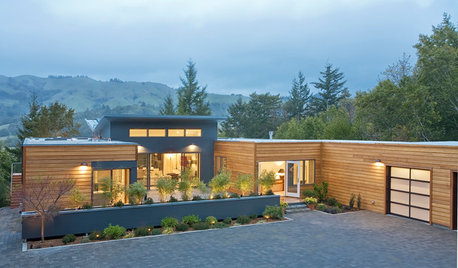
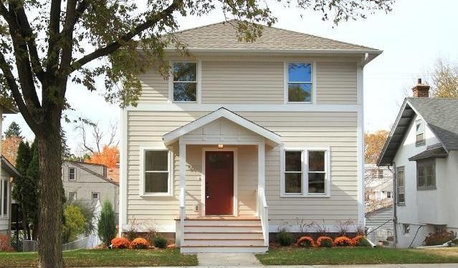
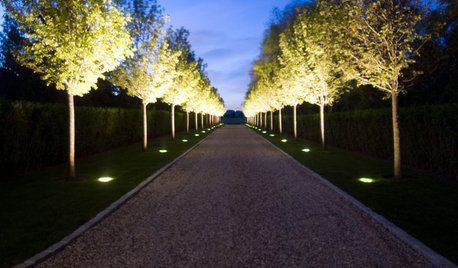
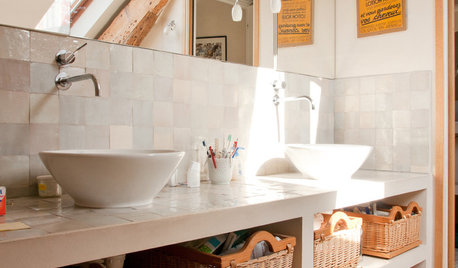

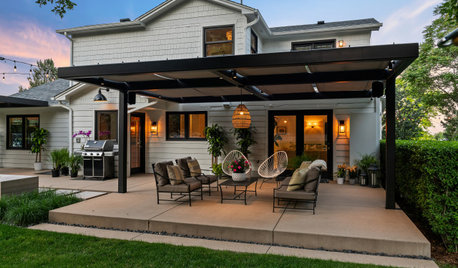

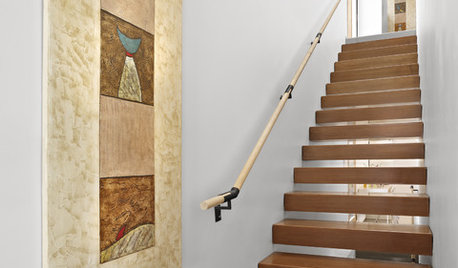
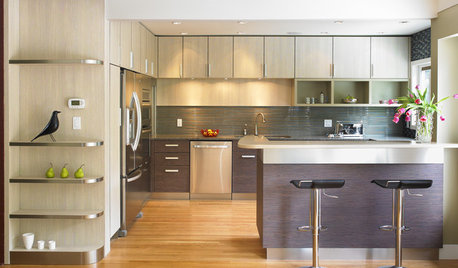








Anglophilia